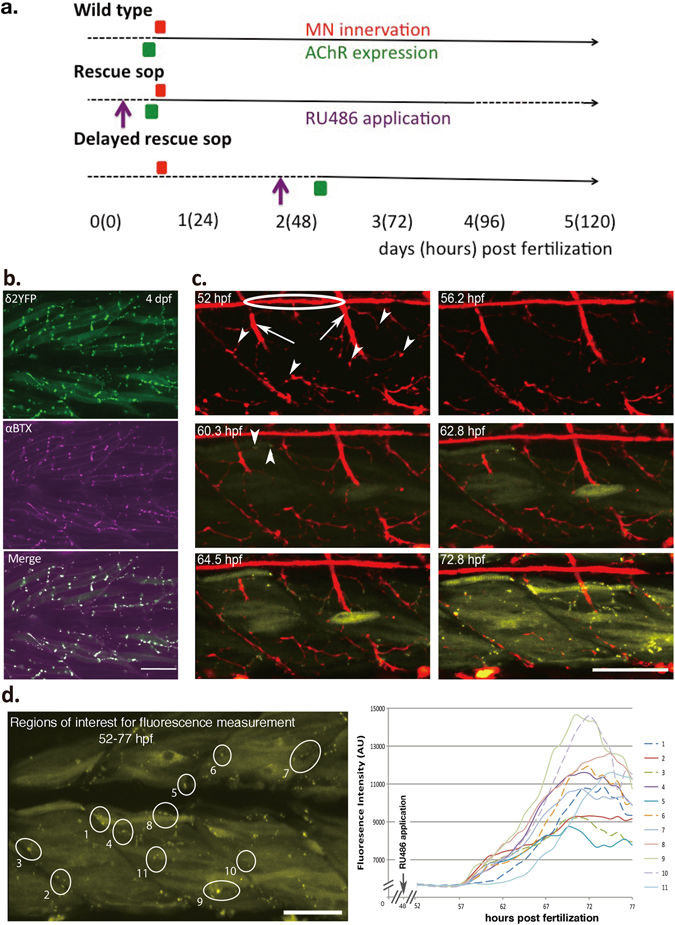アセチルコリン受容体の発現が神経支配に遅れると、自発的シナプス小胞放出が抑制され、筋疲労を招く
Expressing acetylcholine receptors after innervation suppresses spontaneous vesicle release and causes muscle fatigue
2017年5月10日 Scientific Reports 7 : 1674 doi: 10.1038/s41598-017-01900-3

シナプスの形成と機能には、特定の分子群が発生段階中で協調しつつ正確なタイミングで発現することが重要である。本研究では、アセチルコリン受容体(AChR)の発現が消失している遺伝的背景上に、任意のタイミングでAChRを発現するように操作したゼブラフィッシュを用いることにより、シナプス後細胞のAChRの発現タイミングがシナプス前細胞からの小胞の放出にどんな影響を及ぼすかを検討した。長期にわたるAChRなしでのシナプス形成の後に、正常より遅れてAChR発現を誘導すると、麻痺していた動物は、発達の遅れはあるが、強い逃避反応を示すなど顕著な回復を示した。しかし、外見上の行動回復にもかかわらず、シナプス形成はAChRの発現が遅れることで明らかに変化していた。正常な神経筋接合部(NMJ)発達では、AChRのクラスター形成は神経支配に先行するが、この場合は全く逆で、運動ニューロンがAChRのクラスター場所を決めるようになった。さらに重要な点として、このゼブラフィッシュでは、シナプス小胞放出の3つのモードのうち、自発的放出機構が強く抑制されたのに対し、活動電位の誘発する小胞放出にはほとんど影響がなかった。こうしたシナプス前側の変化は、シナプス後AChR欠損に対する補償機構の一部である可能性があり、重症筋無力症などのAChR低下を特徴とする神経筋障害で、その症状の基盤をなすものかもしれない。
Corresponding Author
The formation and function of synapses are tightly orchestrated by the precise timing of expression of specific molecules during development. In this study, we determined how manipulating the timing of expression of postsynaptic acetylcholine receptors (AChRs) impacts presynaptic release by establishing a genetically engineered zebrafish line in which we can freely control the timing of AChR expression in an AChR-less fish background. With the delayed induction of AChR expression after an extensive period of AChR-less development, paralyzed fish displayed a remarkable level of recovery, exhibiting a robust escape response following developmental delay. Despite their apparent behavioral rescue, synapse formation in these fish was significantly altered as a result of delayed AChR expression. Motor neuron innervation determined the sites for AChR clustering, a complete reversal of normal neuromuscular junction (NMJ) development where AChR clustering precedes innervation. Most importantly, among the three modes of presynaptic vesicle release, only the spontaneous release machinery was strongly suppressed in these fish, while evoked vesicle release remained relatively unaffected. Such a specific presynaptic change, which may constitute a part of the compensatory mechanism in response to the absence of postsynaptic AChRs, may underlie symptoms of neuromuscular diseases characterized by reduced AChRs, such as myasthenia gravis.

